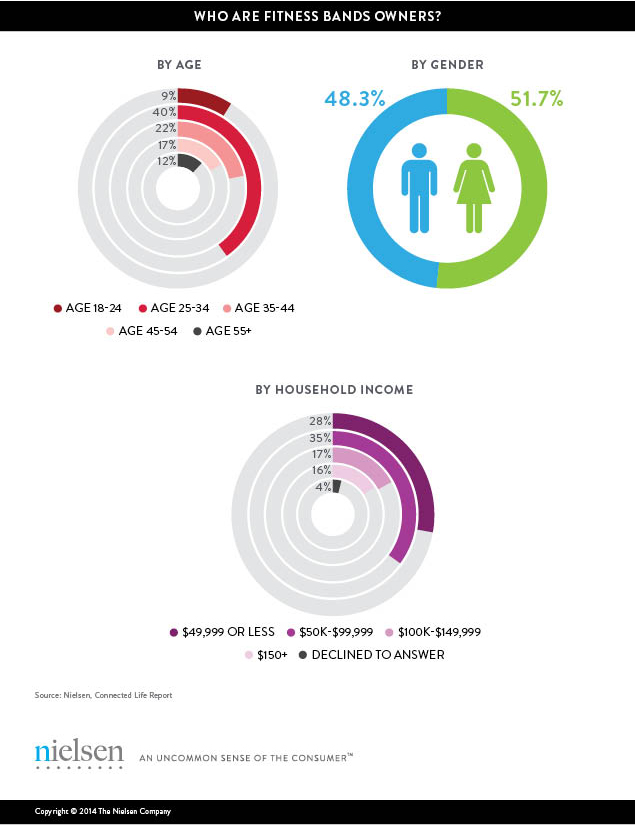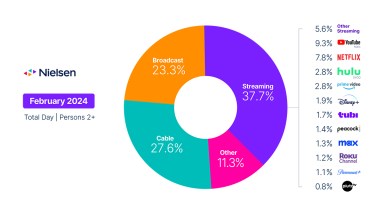Wearable tech is a hot trend this season, seen on the sleeves of consumers walking down the street—and even on models walking the runway. Already, about one in six consumers who have heard about wearables are using them, and among them, 61 percent are wearing fitness bands. But the appeal of wearables goes beyond fashion accessories, particularly as more consumers adopt technology to help address their individual health and fitness needs, using both wearables and smartphone apps to meet their goals.
So who makes up this growing group of device owners interested in their health? Nielsen’s recent Connected Life Report found that young adults lead the charge in adopting wearable tech, with consumers between ages 18-34 making up half of owners of fitness bands (49%). While men and women wear fitness bands in nearly equal numbers, women were more likely to use mHealth devices (mobile health devices used to monitor specialized health needs) than men. Overall, wearables owners tend to have more disposable income, especially among fitness band users, as one-in-three earn $100,000 or more in household income.

In parallel with growing ownership of fitness bands and mHealth devices is the growing usage of fitness and health apps on smartphones. Nearly one-third of U.S. smartphone owners—about 46 million unique users—accessed apps in the fitness and health category in January 2014, an 18 percent increase in users compared with the same month a year earlier. Popular apps that connect consumers with their wearables include FitBit (3.3 million users), Nike+Running (0.8 million users) and Samsung’s S Health app, which attracted more than 3 million users in January before the company announced its own fitness bands at Mobile World Congress.
Consumers also use fitness and health apps beyond wearables, with usage as varied as their own health interests, including everything from Calorie Counter & Diet Tracker by MyFitnessPal (8.7 million users) to exercise apps like Nexercise (3 million users) and Runkeeper (2.1 million users). Although most wearables owners are young adults, the majority of consumers using the MyFitnessPal’s app are over the age of 35, proving that health is important to consumers of all ages.
Women are driving the growth in fitness and health apps, as 60 percent of women ages 30-39 use these smartphone apps, compared with 44 percent of smartphone owners overall. And while men and women are equally likely to own wearables, women used Fitbit’s smartphone app nearly twice as often as men (29x per month vs. 16x per month in January, respectively) and accessing the app nearly every day.
No matter who uses smartphone apps to keep tabs on health, consumers make them a part of their daily routines, accessing fitness and health apps 16 times per month and spending more than an hour using them, on average.
METHODOLOGY
Insights from Nielsen’s Connected Life Report were gathered from general population survey of adults 18 years or older that consisted of 3,956 respondents who are either current users or non-users with high interest in Connected Life technologies. Respondents completed an online, self-administered survey early November 2013. The sample includes 2,313 respondents interested in connected-wearable technology.
Insights about smartphone app usage were gathered using Mobile NetView 3.0, Nielsen’s on-device software which is installed with permission on panelist smartphones (Android and iOS handsets). Mobile app usage is electronically measured through this opt-in panel of approximately 5,000 panelists ages 18+ participating in the U.S. market during January 2014.



